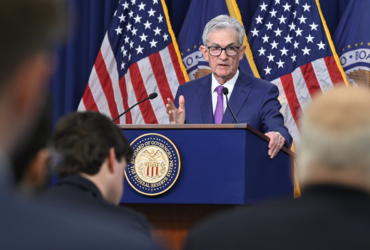The latest Producer Price Index (PPI) data has sent ripples of concern through economic circles as it surged beyond expectations, indicating a significant rise in inflationary pressures. February’s monthly PPI rose by a substantial 0.6%, surpassing economists’ forecasts of a 0.3% increase. This marks the most substantial uptick since August 2023. Moreover, on an annual basis, the index climbed to 1.6%, outpacing projections of a rise to 1.2% and hitting the highest level since September 2023.
What’s particularly alarming about this surge is its deviation from recent trends. Unlike previous months where inflation was predominantly driven by services, February’s increase can largely be attributed to rising prices of goods. Goods prices soared by 1.2% during the month, primarily fueled by a staggering 7% surge in gasoline prices. In contrast, service inflation remained relatively subdued, registering a modest 0.3% uptick in February.
Core PPI, which excludes volatile food and energy prices, also experienced a notable increase, rising by 0.3% for the month. On an annual basis, core PPI surged to 2.8%, marking the highest level since October 2023.
The unexpected acceleration in PPI poses a significant dilemma for policymakers, particularly the Federal Reserve. This surge in inflationary pressure suggests that there may be excess liquidity in the system, potentially necessitating a reassessment of the central bank’s monetary policy stance. With inflation running hotter than anticipated, the Federal Reserve may face mounting pressure to adjust interest rates to curb inflationary pressures and prevent the economy from overheating.
The implications of this uptick in PPI extend beyond the realm of economic data. Inflation erodes consumers’ purchasing power, leading to higher costs of living and reduced real income. Moreover, businesses may find it challenging to absorb higher input costs, potentially leading to margin squeezes or passing on the increased costs to consumers through higher prices.
While some degree of inflation is considered healthy for economic growth, a sustained surge in prices could fuel concerns of runaway inflation and prompt more aggressive monetary tightening measures. As such, economists and policymakers will closely monitor subsequent PPI releases and other inflation indicators to gauge the trajectory of price pressures and adjust policy accordingly.
In conclusion, the unexpected surge in PPI underscores the challenges posed by inflationary pressures and raises questions about the appropriate policy response. As the Federal Reserve navigates these uncertain waters, the coming months will be crucial in determining whether inflationary pressures are transitory or indicative of more persistent trends, with far-reaching implications for the broader economy.





